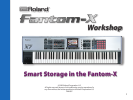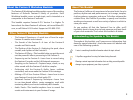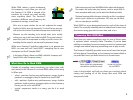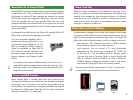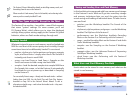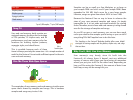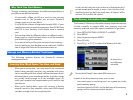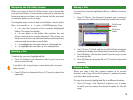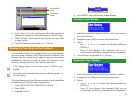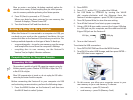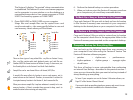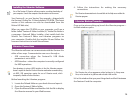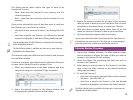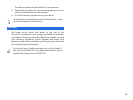
4
While RAM makes a great workspace,
it’s temporary—each time you turn off
the Fantom-X, its RAM is cleared of its
contents. As a result, you can’t actually
store anything there. The Fantom-X
provides a different sort of memory for
permanent storage, as we’ll see.
We’re sorry to repeat ourselves, but we can’t emphasize this enough:
Anything in RAM is there only temporarily. It’s critical that you save your
work to one of the Fantom-X’s permanent storage areas to avoid losing it.
Whenever you edit something you’ve already saved, you’re actually
working on a copy it that’s been loaded into RAM. This is great because it
means that you’re free to experiment as wildly as you like, secure in the
knowledge that the original is safe and sound in permanent storage.
While most Fantom-X activities take place in its general-use
RAM—an area we’ll call “work RAM”—sampling has its own
workspace we’ll call “sample RAM.”
In the Fantom-X Owner’s Manual, work RAM is called the “temporary area.”
Sample RAM is called “temporary memory.”
What Goes On In Work RAM
Outside of sampling, most everything you select, play, edit,
and record in the Fantom-X is in work RAM while you’re using
it. When you:
• select—patches, rhythm sets, performances, songs, rhythm
patterns, or arpeggios, they’re loaded into work RAM.
• edit—patches, rhythm sets, performances, songs, rhythm
patterns, rhythm groups, arpeggio styles, or chord memory
forms, you do so in work RAM.
• record—sequencer tracks in a song, you do it in work
RAM.
Audio tracks are a special case. Work RAM holds the audio tracks themselves.
The samples that audio tracks play, however, reside in sample RAM. To
learn more about audio tracks, see the Audio Tracks Workshop booklet.
We haven’t mentioned effects because, technically, an effect is an element
within a patch, rhythm set, or performance. Still, when you edit effects,
that, too, takes place in work RAM.
Work RAM has a pre-designated area for each of the items it
holds. The currently selected patch is loaded into its own area,
the current song goes into its own area, and so on.
Preserving Work RAM Work
Each time you select something new for one of these areas,
it replaces what’s currently there. Therefore, If you’ve been
editing or recording, be sure to save your work to a permanent
storage area before selecting something new to play or edit.
The Fantom-X helpfully provides some visual cues that let you
tell at a glance if something you’re viewing has been edited or
recorded but hasn’t yet been saved in its current state.
Patches, rhythm sets, and performances
that need to be saved have an asterisk.
In other cases, you’ll see
the word “EDITED.”
Later in this booklet, we’ll tell you where you can learn about
saving and loading all of the things that work RAM can
temporarily hold.



